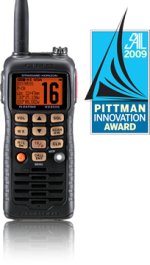I would say that if you are always within range of Coast Guard radio stations, that the EPIRB is not necessary. But the average range is of VHF is 25 miles. If you are just going between N. Vancouver Island and Seattle and stick close to the Island or lower Mainland--not necessary--but once you go into any fjord--such as up to Princes Lousia Inlet, you do not have VHF communication with the CG--you can rely on boats or camps/loggers/ wharfmongers...
If you stick between channel Isands and the Mainland, along the ICW's etc--again: EPIRB not necessary.
We do do run in some areas along the gulf coast, where there is no VHF coverage, and once you get more than 25 miles offshore, there is less chance to contact on VHF. Just being able to contact another boat may not be enough--but at least it gives some "re-assurance".
I don't entirely agree with Tom. The built in and sealed batteries are very reliable. ACR will replace the battery free if you use the unit for a distress call or document its use for rescue. There is less likehood of failure of the built in batteries which are waterproof and sealed.
Floating is nice--but you should have a lanyard--it does not good if it floats away from you. The antennas of the PLB have to be held out of the water.
Here is the promotional information of the "Fast Find: by McMurdo:
Fast Find PLBThe World's Most Compact and Affordable Range of Satellite Personal Locator BeaconsRevere is proud to announce the amazing new FAST FIND Satellite Personal Locator Beacon (PLB): the most compact, waterproof and versatile 406 MHz emergency location beacon available on the market today. FAST FIND is manufactured by McMurdo, producers of emergency locator beacons for more than 20 year, has used the latest developments in electronic design to produce its newest PLB. Like many other search and rescue agencies around the world, the US Coast Guard has long been familiar with McMurdo's range of emergency locator beacons. FAST FIND is an essential piece of life-saving equipment, weighing in at just 5.3 oz (150g) and having the size of an average mobile telephone (actual dimensions being 1.34" x 1.85" x L 4.17") it will slip into the smallest pocket or backpack compartment. The user can activate it in the most remote locations around the world: on land, at sea or in the air, and can be confident of being able to contact the world's professional search and rescue services directly if they are to encounter a possibly life-threatening situation. FAST FIND comes equipped with an integral 50-channel GPS system and complies with rigid federal and international standards. It operates on the global COSPAS SARSAT 406MHz search and rescue satellite communication system, so a call for help will be acted upon...and fast. The FAST FIND is subscription FREE and does not rely on any commercial call centers. All FAST FIND models transmit two signals simultaneously: a global 406 MHz signal and a 121.5MHz local signal. Once activated, FAST FIND's signals will continue to transmit for at least 24 hours, at a powerful 5 watt output, the 406 MHz transmission ensures that a call for help gets through, no matter what the conditions. FAST FIND also includes a unique flashing SOS LED light
I have always used ACR EPIRBs since 1975. They have an excellent reputation. McMurdo had a problem a few years ago--these were fixed and there was a general recall.
The difference between the Larger units is the larger units are assigned to the boat (not to a person--but the PLB has a place in registration to describe boat/boats)) and cannot be used for hiking. The larger units have 48 hours minimal transmission, vs 24 hours minimal for the PLB. The larger units float high in the water, and have an antenna which is clear of the water. The PLB are best hand held clear of the water. The larger units can have hydrostatic release and activation, vs manual for some large units, and manual release and activation for the PLB.
GPS: If it has an internal GPS it can acquire a signal which is more accurate than the triangulation which comes from the satellite location. The satellite location will give an area of about 100 sq miles, vs less than 10 sq miles for the GPS. I have seen cases where it was difficult to find the beacon with only the homing beacon, even though they knew within a couple of miles where it was. The GPS should give faster rescue.
I'll have to disagree with Tom about "last known GPS number". The units without GPS do not record a GPS number, unless they have an interface to the ship's GPS; (many do not have the interface). The satellite Sat Sar system can triangulate on the EPIRB and give a fairly rough idea of the position, without GPS, and then the 121.5 mhz signal allows homing on the location (but not as accurately or quickly as with the GPS).
If I was buying a PLB today, I probably would buy the Fast Find by Revere (MCMurdo). It is "adequate"--in that it sends the signal with a GPS location for 24 hours. (This is assuming that what I have quoted is correct and the unit has a GPS built in). 24 hours is more than enough for coastal rescue. When offshore, then the 48 hour battery and larger unit is justified. We carried two larger units when we were offshore: one with the life raft, the other by the companionway.

